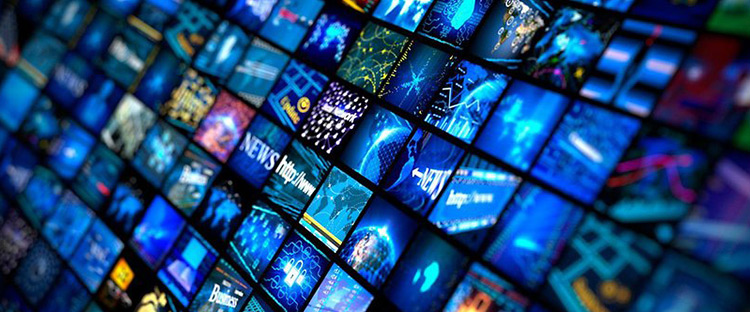Broadband content: IPTV, OTT, smart TV

IPTV, or Internet Protocol Television, is television via the Internet. This mode of distribution and consumption of audiovisual content has taken off thanks to the progressive, unstoppable spread of broadband home connections and mobile devices – laptops, tablets and smartphones. Through IPTV, it is possible to broadcast and receive both live programs, such as a football match, and on-demand content, distributed to individual users upon request. There are different methods for distributing each type of content. For on-demand content, the Unicast protocol is used, a point-to-point connection that directly links the user to the content provider. Multicast protocols, which can be used for live contents, allow the simultaneous transmission of the same audiovisual stream to multiple recipient devices. Unicast and Multicast technologies are used in a hybrid mode, along with technical solutions (both at the infrastructure level, such as CDN services and local caches that bring content closer to where it will be consumed, and in the construction of streams, with the use of adaptive streaming protocols that adjust stream quality based on bandwidth availability) to ensure optimal user experience.
Depending on the available bandwidth, IPTV supports high resolutions (HD and 4K), interactive features, but above all, total flexibility compared to a traditional schedule. Beyond the technical characteristics, the most significant impact of IPTV has been on viewer behavior, and consequently on the television content market itself. The domestic centrality of the “old” linear TV, with its fixed schedules and shared rituals, has lost its traditional supremacy in favor of anytime, anywhere consumption, with the ability to watch programs wherever a broadband connection is operational and through various devices other than the television (tablets and smartphones, but also personal computers).
IPTV has significantly contributed to another phenomenon, the “destructuring” of the schedule: users can freely choose what to watch and when to watch it. A true revolution for viewers, as well as for broadcasters. In its progressive evolution and growth in viewership, IPTV has inspired new business models, platforms, and on-demand services created mainly by television networks, telecom operators, and new entities specializing in the online distribution of paid content. These are the OTTs, the Over-the-Top platforms. From Netflix to Amazon Prime, Disney+ to AppleTV or NOW TV, the spread of broadband has allowed a series of new players to establish themselves in the market with a host of films, TV series, and sports events offered on-demand. Similarly, traditional broadcasters also offer OTT services to enrich and deepen their offerings and to free them from the rigidity of the schedule. This is the case with Rai Play or Mediaset Infinity.
Thanks to the Internet, television has evolved into new forms and towards unprecedented consumption models. The new services can also be enjoyed on computers, tablets, and smartphones, at home, outdoors, or on the move. But even the old television set has evolved, it has become smart. Connected to the web, as well as to the regular TV antenna, it has become not only larger, thinner, and wider but also smarter. Like a smartphone, it accommodates the necessary Apps to receive OTT services. And thanks to new standards and protocols, such as DVB-I, it will allow access to different services – regardless of whether they are distributed via IP or through the antenna – in a transparent manner for the user. Thus reaffirming once again its central role within a home entertainment system.

